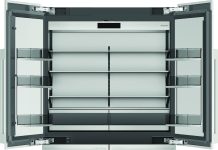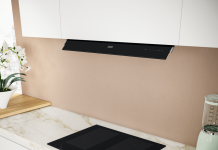Certainly, but not to the detriment of consumptions. The true challenge issued to companies is cultural: to work for an effective communication that helps in dismantling the equation that makes higher consumptions correspond to better performances. Several ideas that might be revolutionary: coordinate hobs and pots, ovens with flexible sizes, with new geometries for water jets…
Energy and performances: we have always spoken of– and therefore worked – intensely towards the optimization of appliance performances, performances that have always lived the paradox according to which if machines are made more performing they usually imply proportional consumptions; therefore, research and development face the dilemma: “do I create a machine with exciting performances or must I limit myself and reduce the performances to decrease consumptions?”.
Great dilemma. The magic solution obviously does not exist but in some cases there is certainly the possibility of revising solutions that – even if nowadays well-proven and considered unassailable strongholds – perhaps might be revised in the light of what said.
To encourage the will of prosecuting the research towards this direction, it is worth noticing that the boost to control consumptions and to reduce them, which was initially driven by purely economic reasons, currently it is backed by a strong collective will as well, aimed at reducing energy wastes not only due to mere economic motivations but also in the wake of an environmental awareness that makes us feel more responsible also for the strong impact on the environment that surrounds us, owing to our actions: in other words, a new and more mature ecologic consciousness that becomes a real driver for purchases.
Such a massive emotional boost clarifies that the new ecologic awareness is an issue that can involve different applications depending on the type of appliance examined. Probably, the attainable energy saving in an immersion blender will not be so interesting as the one achievable in a dishwasher or in a boiler but we should underline that one of the hindrances in trying to reduce appliance consumptions is essentially a marketing problem.
It is very simple, in fact, to boast performances measurable in watts to claim one’s own superiority compared to competitors, since numbers are easily interpreted.
Therefore, the 950-watt microwave oven will seem more performing that the 750-watt one, or better, it will be a simpler matter for the reseller proposing it to potential customers.
Clearly, we are facing a problem that highlights how much it is difficult to undermine the culture of “big is better”.
Over the last few years, a glaring example has always been the automotive industry that, once identified the successful model, in the incoming years simply “dopes it”, increasing sizes and power without considering the impact on consumptions.
The question then is the following: can we think of introducing a culture promoting “small is better”?
Let us consider induction hobs: the first sale topic with which they are proposed to consumers is connected with their capability of reaching high temperatures quickly, whereas the aspects linked with low consumptions are often deemed secondary, especially if compared with pyroceram. Besides, this is true for gas hobs, too, which, especially in high-end models, reach higher and higher powers, approaching the ones featured by the solutions for the professional market.
Now it is perhaps the right time of involving consumers in a project that more arouses a great emotional component, to allow them to choose appliances with a highly optimized consumption/performances ratio.
We perfectly know that the energy classes currently used to index appliance consumptions not only mirror the real efficacy/consumptions ratio but instead a more algebraic efficiency ratio between what absorbed and what produced as output.
An example is represented by oven cavities, where a 90 cm-cavity is rarely exploited and instead results in a significant energy dispersion indeed, despite the appurtenance consumption class.
Why, then, not to make use of cavities containing adjustable mobile parts permitting to adapt the cavity volume to the real cooking needs, in other words to the sizes of the pots used from time to time?
A mobile panel system and a tilting resistance might be the basis for a solution about this matter.
For cooking, it would be advisable the joint design of hobs and dedicated cookware, which might constitute an overall integrated system aimed at attaining optimized shapes, sizes and contact surfaces; in the induction case, we would obtain the result of decreasing the involved powers favouring the diffusion whereas, for the gas cooking, we would succeed in recovering all that part of energy dissipated along the pot edges during the cooking process.
Pots for hobs with cavities/edges that collect heat better? Why not.
For the crockery washing, some high-pressure solutions, with a better study of jet geometries, might help in decreasing operation temperatures as well as the duration of the washing cycle; we could do the same by creating cage-racks literally trapping glasses and thus avoiding that an aggressive washing damages them, as it happens in professional washing systems.
In the linen washing as well we essentially still rely on an obsolete system that, even if subjected to numerous optimizations over the years, today perhaps starts showing the first backwardness signs.
The standard system with rotary drum, born as mechanical imitation of the manual action of rubbing clothes one another, fundamentally represents the limit of an obsolete design.
In this article, it is not simple to provide definitive solutions to problems underlined and faced by several others and still unsolved but one thing is certain: the definitive solution cannot be limited to a single idea applied to an appliance but it must involve a wider concept of improvement of the energy efficiency of the home system.
The “home system”, in fact, must be conceived as a single autonomous unit, optimized in all of its aspects concerning the energy consumption, starting from the energy provisioning that must be enabled, at least partially, by alternative solutions to traditional ones; together with domotics, the implementation of an integrated energy system for dwellings might represent an interesting evolution in the household appliance sector, no more system appendix but integral part of a home-energy-machine system.







